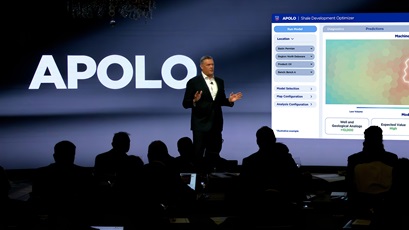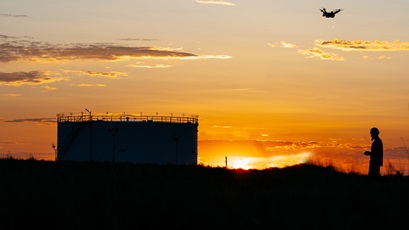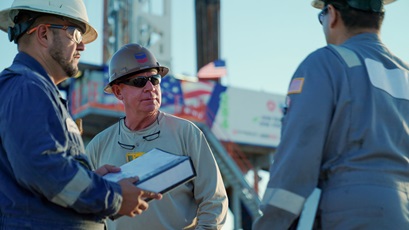our operations
using robots to help keep workers safe during tank inspections
2 min read | august 30, 2024
Brandon Baylor, a Chevron robotic projects engineer, participated in the deployment of robotic tank inspections.
Growing up near the oil- and gas-rich Appalachian region of the eastern U.S., Brandon Baylor always thought he might work in the energy industry.
But he never imagined that his career would involve working with both people and robots. Now a Chevron robotic projects engineer, Baylor recently participated in an initiative to use intelligent machines to reduce the number of human tank inspectors in hazardous environments.
“This was a really profound opportunity that excites me for the future,” he said. “It’s been one of the most effective technology deployments I’ve ever been a part of in my 15-year career.”
robots lending a hand
Traditionally, inspecting the bottom of a tank—which can hold anything from water to crude oil—involves draining the tank and having a person enter it. Using a submersible robot to perform the inspection instead can:
- Reduce downtime and possible loss of production by removing the need for the tank to be emptied and vented.
- Reduce safety risks associated with having a group of people enter a tank.
- Increase the availability and quality of data so more effective decisions can be made.

The robots are deployed at a number of U.S. facilities, including Chevron’s El Segundo Refinery in California (pictured).
why it matters
Chevron has been striving to reduce risk and eliminate human exposure to hazardous environments, including confined spaces and great heights, through technology.
“This is meant to keep people out of harm’s way and keep them safer,” Baylor said. “The No. 1 way to eliminate risk is to remove the person from the hazard.”
more on that
And this isn’t just about safety. Robots can provide better data than human eyes and more effectively help companies like Chevron evaluate the integrity of tank bottoms.
Chevron has been deploying tank inspection technology at facilities throughout the U.S. It has done so using a robot with HD live cameras, advanced sensors and other special technology for precise inspections.
looking forward
Having transferred to Chevron’s robotics department in January, Baylor is part of a larger team that has been working for years to trial tank inspection technology and deployments at various Chevron facilities.
“To see it working effectively is a rewarding experience,” he said.
And Baylor is excited to see what the future holds.
“Being able to clean and inspect tanks in service, basically any time, is our roadmap and our dream,” he said. “When I think about how big and profound the opportunity may be, it excites me for the future.”
topics covered
related content
-

 how APOLO helps chevron pinpoint prime drilling locations
how APOLO helps chevron pinpoint prime drilling locationsour operationsnovember 12, 2025
-

 robotics supports more efficient workplace
robotics supports more efficient workplaceour operationsnovember 10, 2025
-

 the people who power the US energy advantage
the people who power the US energy advantageour operationsnovember 06, 2025
-

 a statement from chevron CEO mike wirth on Argentina
a statement from chevron CEO mike wirth on Argentinaour operationsseptember 24, 2025
chevron email updates
Subscribe to our newsletter to receive news and updates.



